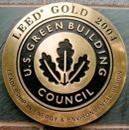Energy on Campus
The campus has committed to reducing energy use, not only to reduce costs, but to meet the goals set for carbon reduction in our Climate Action Plan (PDF).
SUNY Cortland is doing everything it can to become more energy efficient in many ares. We are in the process of phasing out inefficient natural gas fired boilers and replacing them with individual natural gas fired condensing boilers in each of the buildings on campus. These "Satellite" boilers are over 90 percent efficient and are projected to reduce the consumption of natural gas by 20 percent per year. Check out some of our other energy related projects.
Lighting Upgrades
SUNY Cortland has replaced older, inefficient fluorescent lighting with more efficient fluorescent designs. These types of lighting upgrades are at least 40 percent more efficient than older designs.
Energy Management Systems

Many of the existing buildings on campus have also been retrofitted with new highly efficient HVAC systems, energy efficient windows and re-insulated to today's modern standards.
Each building on campus is controlled by an Energy Management System (EMS). These systems control and monitor the building's mechanical equipment such as HVAC systems. They also monitor electrical equipment such as indoor and outdoor lighting. These sophisticated systems maintain the proper temperatures, air quality and lighting levels in the most energy efficient manner possible and provide the tools for energy use monitoring and analysis.
New Building Construction
Major building projects going forward are all designed to meet LEED Gold standards. According to the U.S. Department of Energy, buildings use 39 percent of the energy and 74 percent of the electricity produced in the U.S. each year. LEED designed buildings promote a wide variety of "energy-wise" strategies such as:
- energy use monitoring
- efficient design and construction
- efficient appliances
- highly efficient HVAC systems
- efficient lighting and controls to minimize lighting during daylight hours
- maximizing light from the sun and the use of renewable and clean sources of energy